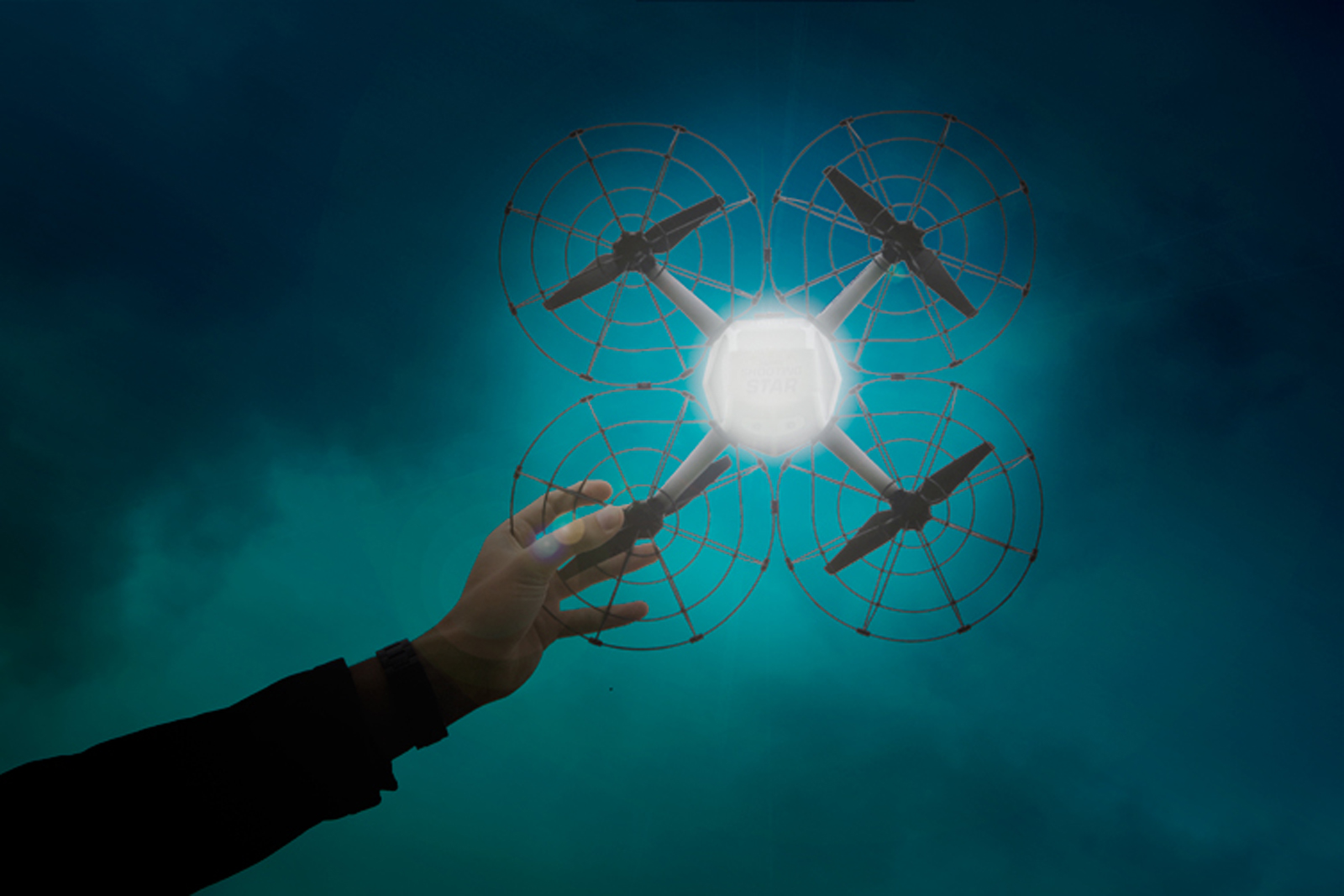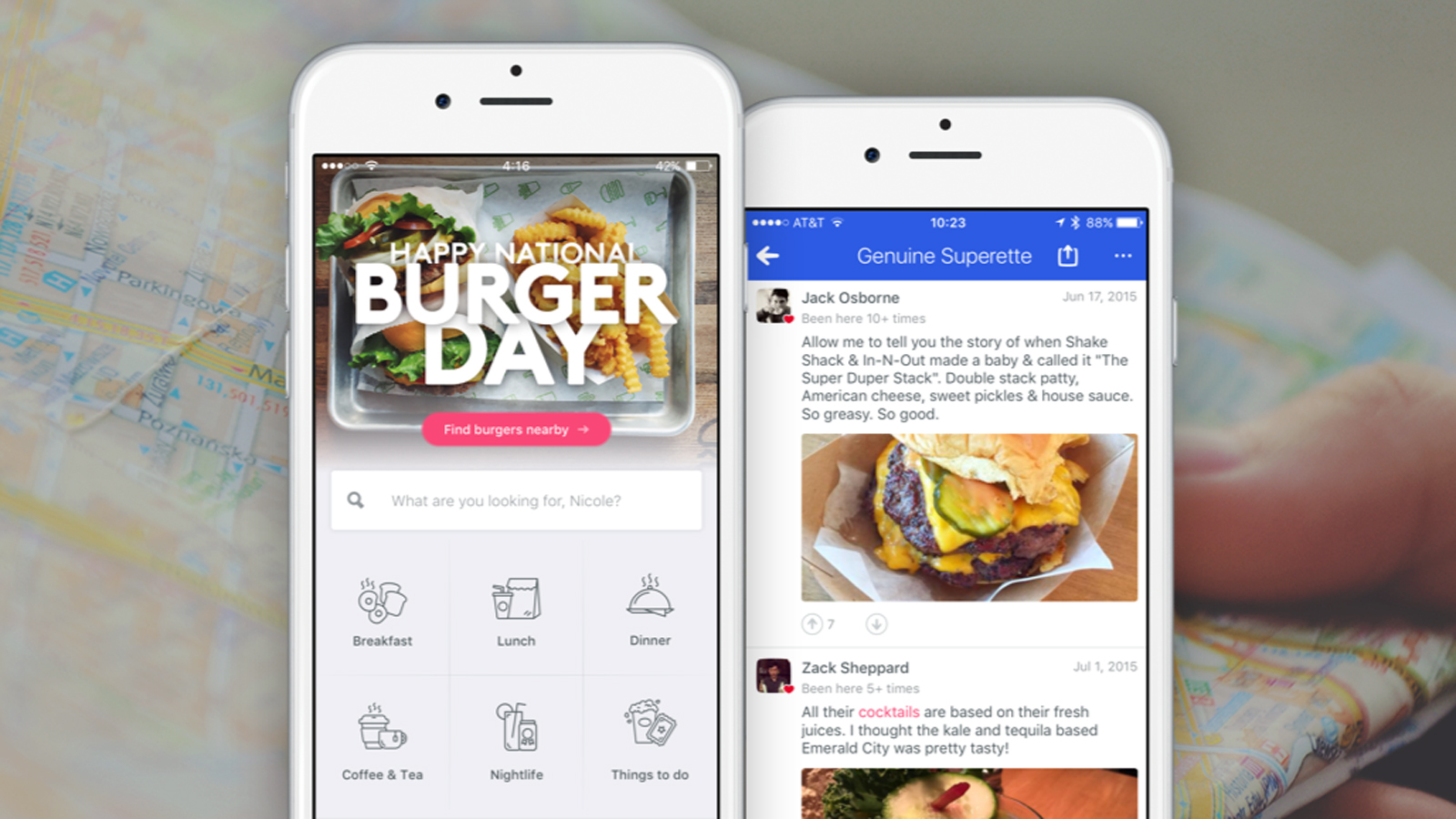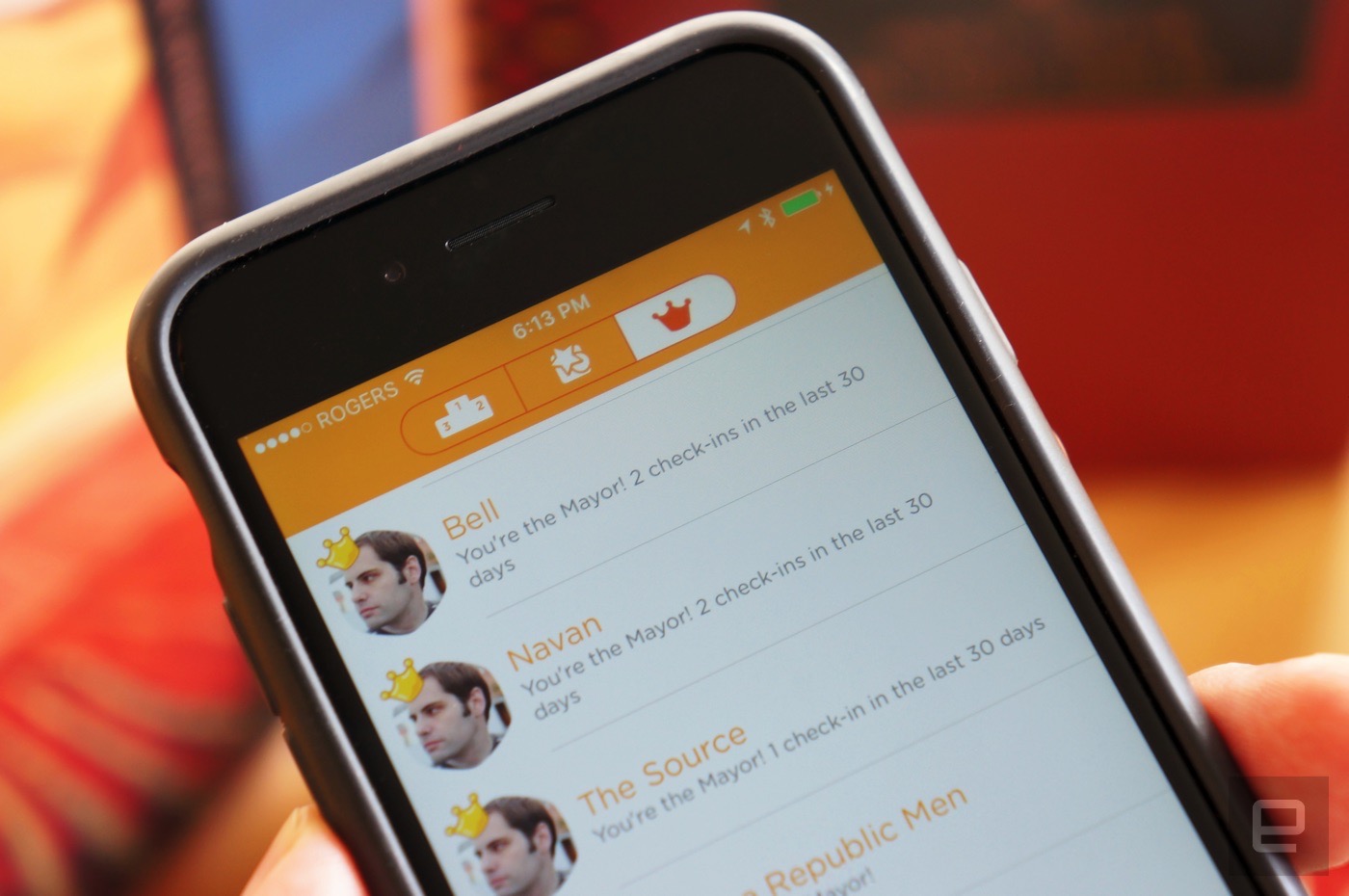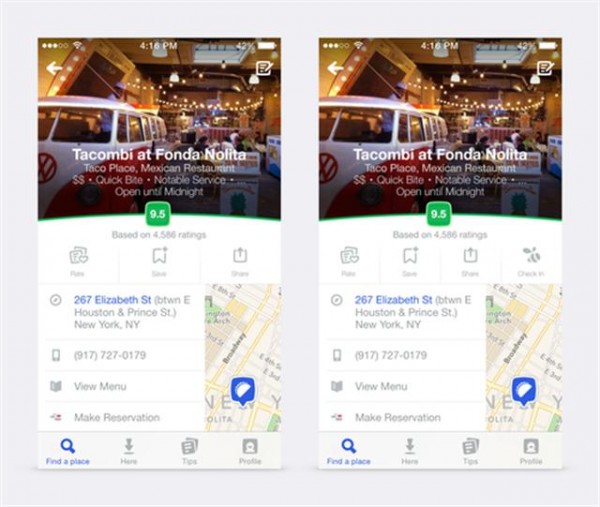A couple of months ago, Foursquare decided to create the Swarm app for checking-in and displaying nearby friends. The most recent update removes the check-in functionality of the main app and concentrates on making Foursquare a more personal experience.
Foursquare started in 2009 as a game. You could let the entire world (or just your friends) know where you are at a particular moment, and the more places you checked-in, the more points you obtained. Racing with friends to obtain supremacy week after week, or becoming the mayor of a particular spot was very fun, and actually encouraged you to visit more places or to become a regular in a location of your choice. This year, in May, Foursquare decided to focus on reviews, and created another app for checking-in, while still retaining some of that functionality in the main app. The new Foursquare, however, has none of that functionality, comes with a new logo, and made a goal from providing personalized recommendations of places you might like.
With the new update, the recommendations are tailored according to each user’s taste. As soon as the users “add tastes, follow experts, or even just walk around for a few days,” the app starts getting an idea about what other places they would like to visit. Foursquare and Swarm now complement each other perfectly, but can be used independently, as well.
Foursquare is also proud of its ever increasing userbase. In its most recent blog post, the company announced that it went past the 50 million user threshold, which is pretty impressive, considering the somehow limited functionality that this app used to have prior to the split.
Locations used to be the most important aspect about being a Foursquare user, but now communities have a lot more emphasis. It’s important what others think of a place, and it’s equally important who you’re tagging while checking-in. What some users don’t realize is that Foursquare is an ideal tool for keeping track of the places you’ve visited, especially if you’re in a foreign city or country that you might visit again in the future. Knowing where you felt good or bad will definitely help you make better decisions in the future.
Be social! Follow Walyou on Facebook and Twitter, and read more related stories about Foursquare’s Swarm app that shows nearby friends and lets you check-in, and how Microsoft invested $15M in Foursquare to get a slice of mobile data.

 Intel isn't just using drone swarms to show off its robotics prowess -- it's building a business around them. The chip maker has unveiled the Shooting Star, a quadcopter drone tailor-made for light shows. Its companion software automates the animatio...
Intel isn't just using drone swarms to show off its robotics prowess -- it's building a business around them. The chip maker has unveiled the Shooting Star, a quadcopter drone tailor-made for light shows. Its companion software automates the animatio...
 Intel isn't just using drone swarms to show off its robotics prowess -- it's building a business around them. The chip maker has unveiled the Shooting Star, a quadcopter drone tailor-made for light shows. Its companion software automates the animatio...
Intel isn't just using drone swarms to show off its robotics prowess -- it's building a business around them. The chip maker has unveiled the Shooting Star, a quadcopter drone tailor-made for light shows. Its companion software automates the animatio...

 Foursquare's namesake app is all about finding things to do around town, but it hasn't really put the strongest focus on the finding part -- it's usually focused on suggestions. Well, the company is fixing that today. The new Foursquare 10 for Androi...
Foursquare's namesake app is all about finding things to do around town, but it hasn't really put the strongest focus on the finding part -- it's usually focused on suggestions. Well, the company is fixing that today. The new Foursquare 10 for Androi...
 Today on In Case You Missed It: A new study just published in Science details the carbon dating process used to find the average age of Greenland sharks is 272, along with pegging one at a likely age of 512. Those engineered shark cell injections...
Today on In Case You Missed It: A new study just published in Science details the carbon dating process used to find the average age of Greenland sharks is 272, along with pegging one at a likely age of 512. Those engineered shark cell injections...
 Foursquare is continuing its quest to bring back all the things you liked from its old check-in app. Swarm now offers real-life perks depending on where and how often you check in. You'll get a discount if you swing by certain stores, for instance,...
Foursquare is continuing its quest to bring back all the things you liked from its old check-in app. Swarm now offers real-life perks depending on where and how often you check in. You'll get a discount if you swing by certain stores, for instance,...
 Do you dread the thought of gentrification jacking up real estate prices (and stifling culture) in your neighborhood? In the future, you might only need keep tabs on social networks to know when your part of town is changing -- British researchers h...
Do you dread the thought of gentrification jacking up real estate prices (and stifling culture) in your neighborhood? In the future, you might only need keep tabs on social networks to know when your part of town is changing -- British researchers h...
 By bringing back mayorships, leaderboards and other features that make every day a new level in one big game, Swarm is now more or less what Foursquare once was. But with the release of Swarm 4.0 today, the check-in app is expanding further beyond th...
By bringing back mayorships, leaderboards and other features that make every day a new level in one big game, Swarm is now more or less what Foursquare once was. But with the release of Swarm 4.0 today, the check-in app is expanding further beyond th...


